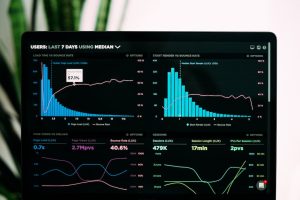Forex trading is a popular financial market where traders buy and sell currencies to make a profit. One of the most important aspects to consider when trading forex is leverage. Leverage is the use of borrowed capital to increase the potential return of an investment. In forex trading, leverage allows traders to control a large position with a small amount of capital. However, leverage can also increase the risks of trading, and traders need to be careful when deciding how much leverage to use.
Understanding Leverage
Leverage is expressed as a ratio, such as 1:50 or 1:100. This means that for every dollar a trader invests, they can control 50 or 100 dollars in the market. For example, if a trader has a leverage ratio of 1:100 and wants to buy 10,000 units of a currency pair, they only need to deposit $100 as margin. The rest of the $10,000 is borrowed from the broker.
Leverage is a double-edged sword. It can magnify the potential profit of a trade, but it can also amplify the potential loss. When a trader uses leverage, a small price movement in the market can have a significant impact on their account balance. If the trade goes in their favor, they can make a lot of money quickly. However, if the trade goes against them, they can lose their entire investment and even more if the trade is highly leveraged.
Factors to Consider When Deciding How Much Leverage to Use
1. Risk tolerance
The first factor to consider when deciding how much leverage to use is risk tolerance. Risk tolerance is the level of risk that a trader is willing to take. Traders who are comfortable with high-risk trades may choose to use higher leverage, while those who prefer safer trades may choose to use lower leverage.
2. Trading style
The second factor to consider is trading style. Traders who use short-term trading strategies, such as scalping or day trading, may require higher leverage to make a profit. However, traders who use long-term trading strategies may be able to use lower leverage.
3. Market conditions
The third factor to consider is market conditions. Volatile markets require lower leverage, while stable markets may allow for higher leverage. Traders should also consider the liquidity of the market and the potential for sudden price movements.
4. Account size
The fourth factor to consider is account size. Traders with smaller accounts may need to use higher leverage to make a significant profit. However, traders with larger accounts may be able to use lower leverage and still make a decent profit.
5. Trading platform
The fifth factor to consider is the trading platform. Different brokers may offer different leverage ratios, and traders should choose a broker that offers a leverage ratio that suits their trading style and risk tolerance.
Conclusion
In conclusion, leverage is an important aspect of forex trading that can magnify both profits and losses. Traders need to be careful when deciding how much leverage to use and should consider factors such as risk tolerance, trading style, market conditions, account size, and trading platform. It is essential to use leverage wisely and to always have a risk management plan in place to minimize potential losses.






